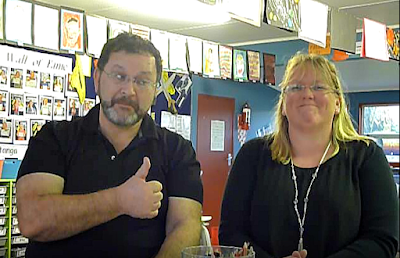Week 11 - LEADERSHIP - Agile and Servant Leadership
Agile Teams are Self-Organising Teams
We will explore this idea using a combination of Boris Gloger’s Ball Point game (Gloger, 2008) and Mike Rother’s Kata in the Classroom (Rother, 2015). Kata is a term from martial arts. The Improvement Kata is a repeating four-step routine for continuous improvement: Plan, Do, Check, Act (PDCA). The goal of the ball point game is for each team to get as many balls as possible to pass through the hands of every team member in 2 minutes. The game involves both estimation and self-organisation.
The four basic requirements of the game are that:
- As each ball is passed between team members, it must have air time
- Every team member must touch each ball for it to count
- No ball to your direct neighbour on either side, you must pass to your front
- Every ball must end where it started. For each ball that does, the team scores 1 point (make sure you count your points)
Agile Leadership Style
Agile leadership is situational, adaptive, empowering and inspirational. The most important leadership theory applied to agile is that of servant leadership (Highsmith, 2009).
“For the Agile Leader, servanthood is the strategy. Situational actions are the tactic” (Filho, 2011).
The key characteristics of the servant leader include awareness, listening, persuasion, empathy, healing, and coaching. Situational leadership means that the servant leader may act as a democratic leader, a laissez-faire leader, or an autocratic leader in different situations (Koganti, 2014).
Servant Leadership
The originator of the servant leadership concept (though inspired by a Herman Hesse story) was Robert Greenleaf. “The best test, and difficult to administer, is: Do those served grow as persons? Do they, while being served, become healthier, wiser, freer, more autonomous, more likely themselves to become servants? And, what is the effect on the least privileged in society? Will they benefit or at least not be further deprived?” (Greenleaf, 1970)
A longer extract from this work is in this week's media
Teachers as Servant Leaders
Servant leadership has been applied by a number of authors to teaching. “The teacher as servant leader functions as a trailblazer for those served by removing obstacles that stand in their path. Part of unleashing another’s talents is helping individuals discover latent, unformed interests. Art, music, and science teachers are prime examples of educators whose genius lies in leading students to discover unarticulated interests.” (Bowman, 2005).
Scrum Agile Lifecycle
Being an agile leader includes applying agile processes. Scrum is a very popular agile software development process, where the product backlog (of user stories) is broken down into a series of sprints. In each sprint, a priority list of stories (the sprint backlog) is chosen for completion. The sprint last for a certain period of time (e.g. 2 weeks, 30 days etc.). There are daily stand up meetings during the sprint, and at the end of each sprint a working increment of the software is delivered. In other words, it is only a successful sprint if it delivers something useful.
CC image from: https://commons.wikimedia.org/wiki/File:Scrum_process.svg
Some other agile techniques
Pair programming - Remember that from computational thinking?
Stand Up meetings (Daily) - Three questions: What did you do yesterday, what are you going to do today? are there any obstacles on your way? (This relates to the next flipped task)
Test driven development - Start with the first test of something, then pass the test. Write the next test, pass that, iterate... The tests evolve and change along with what is being tested
See Briggs (2014) for some ideas about how various agile techniques can be used in education.
References
- Bowman, R. F. (2005). Teacher as Servant Leader. Clearing House: A Journal of Educational Strategies, Issues and Ideas, 78(6), 257.
- Briggs, S. (2014). Agile Based Learning: What Is It and How Can It Change Education? InformED. Retrieved from http://www.opencolleges.edu.au/informed/features/agile-based-learning-what-is-it-and-how-can-it-change-education/
- Filho, H. (2011). Achieving Agile Leadership: Proposing the Agile Leadership Manifesto. Retrieved from
https://www.scrumalliance.org/community/articles/2011/january/achieving-agile-leadership - Gloger, B. (2008). Ball Point Game: A game to feel what Scrum is. Retrieved from https://kanemar.files.wordpress.com/2008/03/theballpointgame.pdf
- Greenleaf, R. K. (1970). The Servant as Leader, The Robert K. Greenleaf Center, Indianapolis, IN.
- Koganti, S. (2014). A Brief History of the Servant Leader. Retrieved from https://www.scrumalliance.org/community/articles/2...
- Highsmith, J. (2009). Agile Project Management: Creating Innovative Products. Upper Saddle River, NJ: Addison Wesley.
- Rother. M. (2015). Kata in the Classroom: A simple exercise to help you teach scientific thinking. Retrieved from http://www.slideshare.net/mike734/kata-in-the-classroom-overview-47711515



